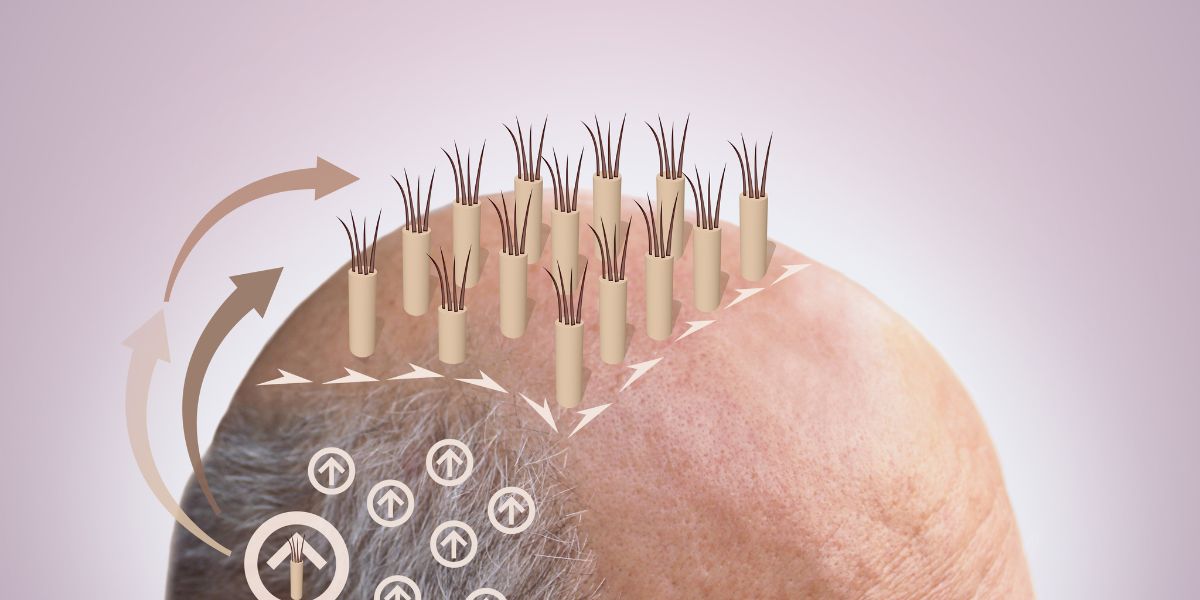Introduction
You may be wondering, What is the difference between a FUE and Neograft hair transplant? Or, Which one is better? Well, you’re not alone. It’s one of the most common questions we get asked when patients are considering a hair transplant. The truth is that both FUE and Neograft hair restoration are excellent methods.
Follicular Unit Extraction or FUE
Follicular unit extraction (FUE) is a minimally invasive procedure that involves extracting follicular units from the donor area and transplanting them into bald areas. It’s less painful than traditional hair restoration, but it can take longer to perform because of the manual extraction method.
The FUE method involves removing tiny plugs of skin from your head with a punch, called an “extractor” instrument. This tiny plug contains 1-4 hairs that are then transplanted onto your scalp by a physician or surgeon in order to create new hair growth.
Neograft
Neograft is a hair transplant procedure that uses a patented system of extracting follicular units from the donor area. Neograft is minimally invasive, using an automated method that delivers consistent results. Doctors are able to extract thousands of grafts at once, which allows them to harvest more hair in less time. Plus, since Neograft does not require stitches or sutures, patients can leave the clinic immediately after their procedure is completed!
Which one is better?
In the end, it comes down to your preference and budget. Both methods are equally effective at providing a natural look. If you have a smaller budget but want a more natural result, FUE is probably your best bet. However, if you have a bigger budget and would prefer the convenience of Neograft’s machine-assisted extraction process (which requires no anesthesia), then Neograft is probably for you. At Anagen Hair Restoration, we help decide which hair restoration methods would work best for your goals and needs.
Comparing FUE and Neograft
FUE is known to cause more pain and discomfort during the procedure, while a Neograft hair transplantation has been reported to be less painful. However, it’s important to note that this difference is not always apparent: if you have a high tolerance for pain or can handle needles well, FUE might not be worse than Neograft in terms of post-surgery discomfort.
It may also depend on what kind of results you want from your surgery: if natural-looking results are important then Neograft will probably suit you better because its grafts look much more like real hair follicles (the source material used by both procedures).
Both procedures are minimally invasive but FUE takes longer and can be expensive if performed by an experienced professional who charges per procedure instead of per hour; however there are many clinics that offer packages with discounts on multiple procedures which makes it easier on your wallet over time!
Both the methods result in great results – the choice is yours!
Both these procedures are equally effective in providing patients with natural-looking hair for their balding areas. They have their pros and cons, and at Anagen Hair Restoration, we aim to help you to choose the procedure that best suits your needs.
If you have a low hair loss rate, FUE might be ideal for you because it has less recovery time and lower risk of scarring compared to Neograft. On the other hand, if you want more coverage or want all your donor hairs to be implanted at once (which is not possible with FUE), then Neograft might be a better option for your needs.
Conclusion
Your hair is a precious part of your identity. When it starts falling out, it can be stressful and disheartening. While you may think the only option for combating hair loss is a full transplant, that isn’t always the case! There are great options on both sides of the spectrum—from doing nothing and waiting out your baldness to completely restructuring your scalp. All of these choices are valid, but they require you to make an informed decision that takes into account your budget as well as how much time you want to spend undergoing surgery or recovery… and that’s where we come in! Some people prefer less invasive procedures that take less time off work and have smaller bills at the end of it all; others don’t mind investing in their appearance because they feel like it’s worth every penny spent on improving themselves. No matter which side of the spectrum you fall on, though, there are plenty of good options, give us a call at Anagen Hair Restoration to set up a FREE no-obligation consultation with us and we’ll help you figure out which option is best for you. (301) 591-6552.


